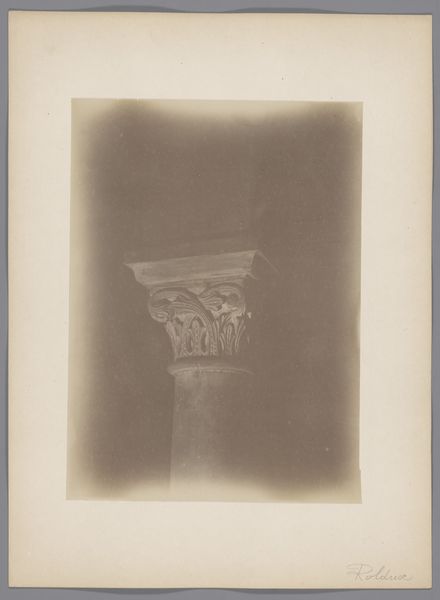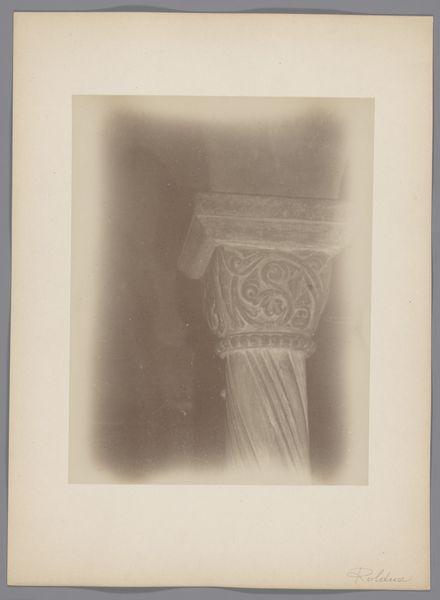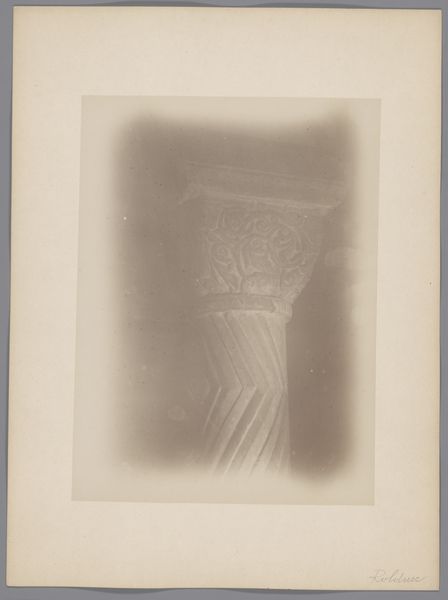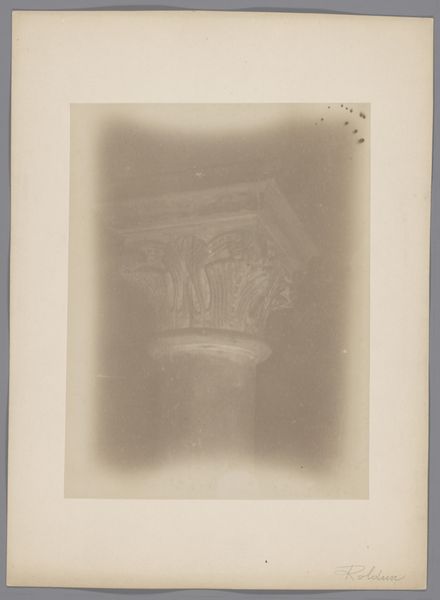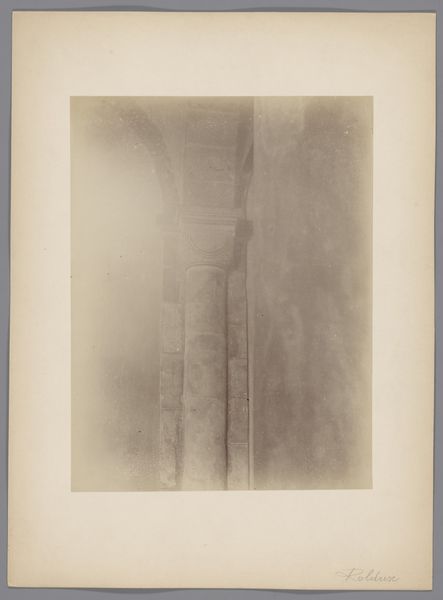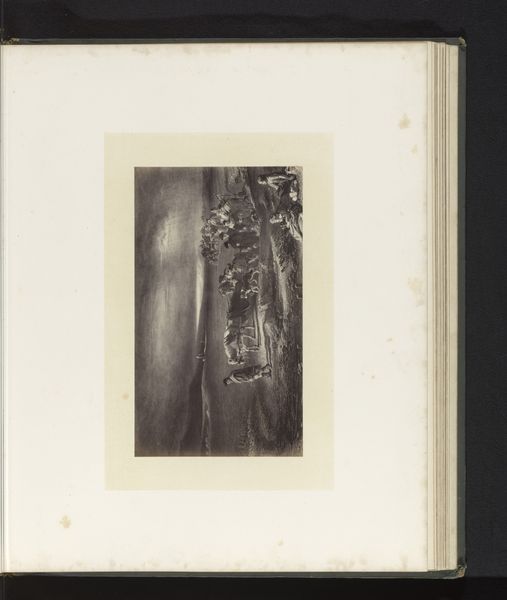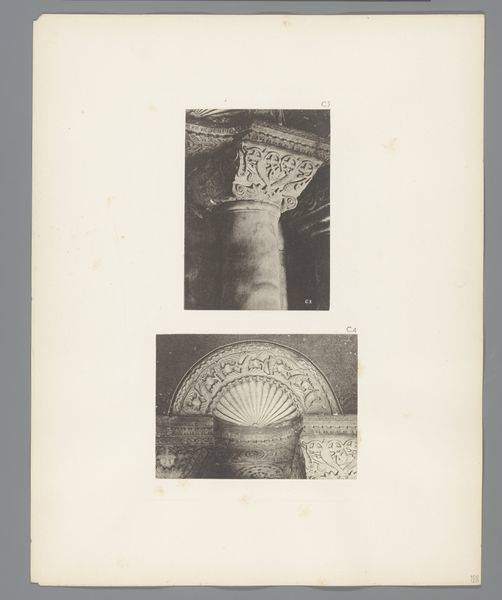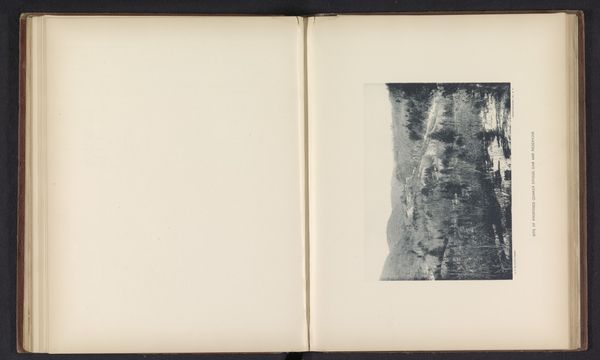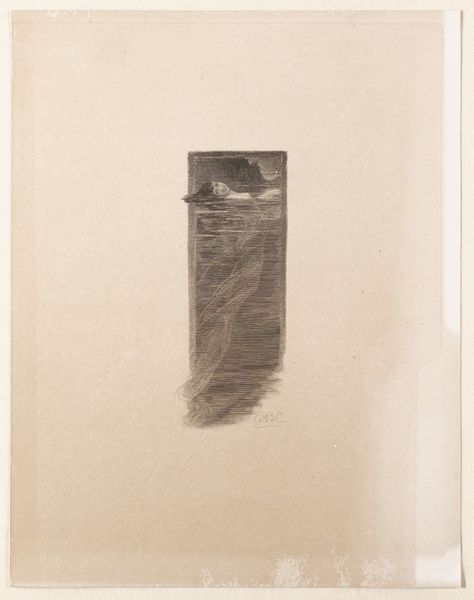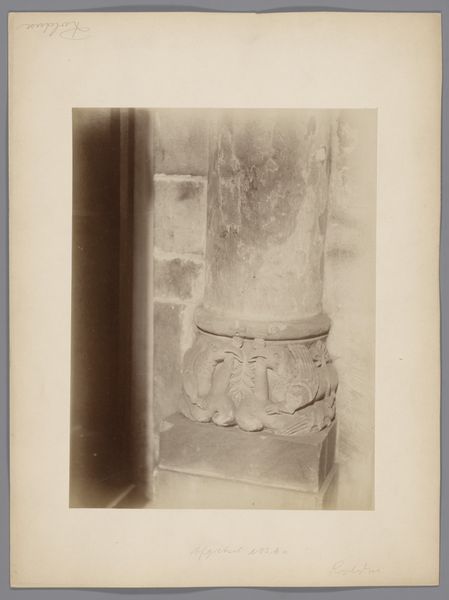
Dimensions: height 215 mm, width 165 mm
Copyright: Rijks Museum: Open Domain
Curator: The image before us captures a column capital from the crypt of Rolduc Abbey Church. Dating back to 1890, it was taken by an anonymous photographer working with the Monumentenzorg. The photographic technique imbues it with a delicate quality. Editor: It feels almost ghostly, doesn't it? The lighting gives a somber air, highlighting the ornate carvings on the capital. There’s something about the muted tones that evokes a deep sense of history and possibly even, a reverence for the space. Curator: That reverence seems accurate. Crypts were integral parts of church structures. Functionally, they could provide foundations and were often used as chapels, adding to the spiritual significance. Rolduc Abbey specifically played a crucial role in religious and political life within the region. Editor: Thinking about the craft that went into carving a single capital… All of that elaborate detailing. I notice that they contain stylized flora; this makes me wonder about the symbolic language the artisans employed, connecting earth, the mortal world, and the divine sphere above. Were particular plants tied to saints or to liturgical themes here? Curator: Absolutely! Floral imagery would likely have resonated on many levels, providing both aesthetic pleasure and layered symbolism for the intended audience. Keep in mind too the politics surrounding images. By 1890, the idea of recording these historical features starts gaining traction in different governmental organizations concerned with the history of building preservation in various regions. Editor: Knowing about Monumentenzorg contextualizes the work nicely. What you said highlights the fact that this photograph represents a shift, or at least an intent to preserve what society felt it could collectively learn from such images. What’s left unsaid—the surrounding architectural context—becomes part of the photograph’s appeal. Curator: Indeed. Photography was fast becoming an essential tool for heritage preservation and historical documentation at this moment in Europe, revealing much about how nations viewed their historical artifacts and built legacy. Editor: This makes the photo function almost like a cultural artifact itself, offering us a way to engage with how societies framed history through these relics of faith and power. I appreciate how our dialogue shows how complex such simple architectural details become once the photographic trace freezes them.
Comments
No comments
Be the first to comment and join the conversation on the ultimate creative platform.
